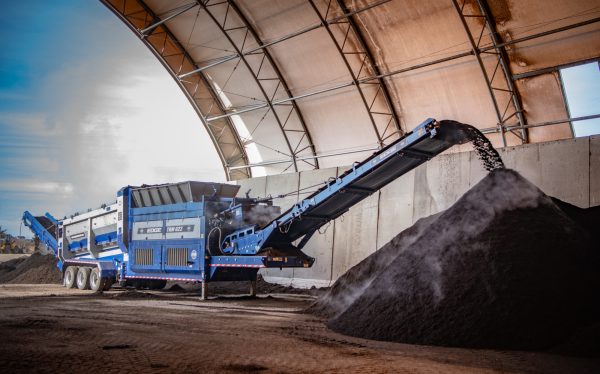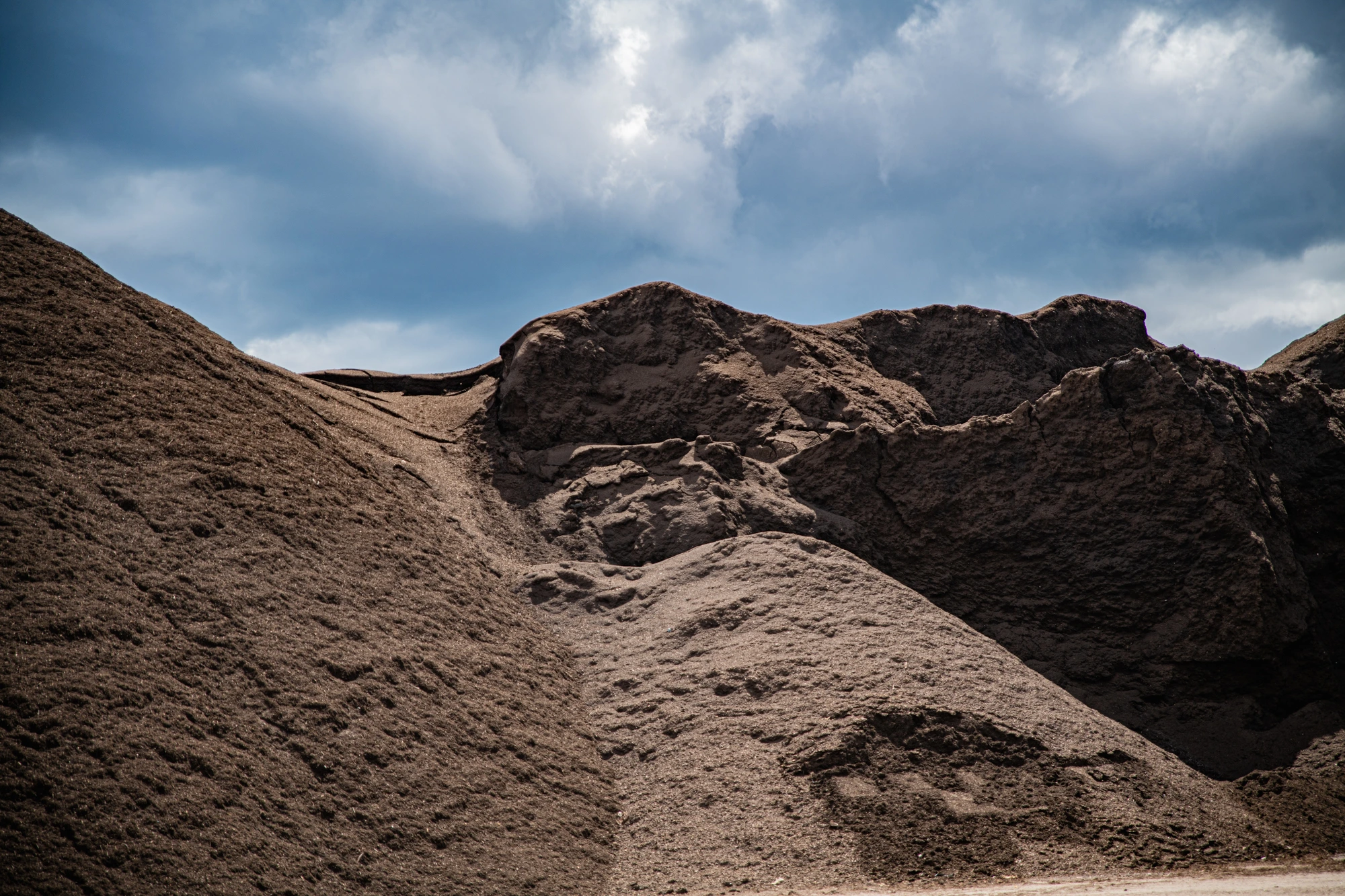Once material arrives at our facility, it is preprocessed for composting by running it through a grinder or shredder for size reduction.

The ground food waste, yard waste, and wood waste is mixed according to our “compost recipe.” A good compost recipe balances these materials to achieve an optimal carbon to nitrogen ratio, ensuring effective composting and minimal odor.
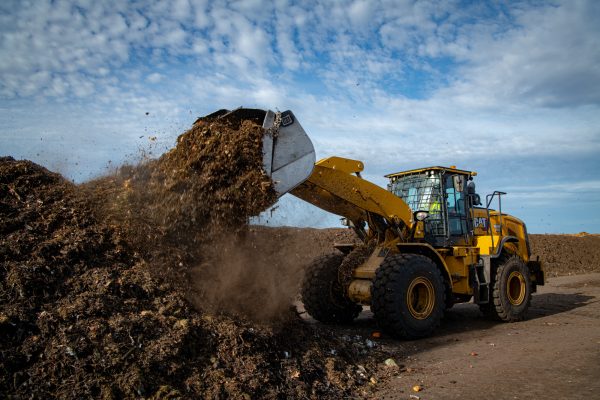
Material is next placed into the first set of aerated static pile (ASP) bunkers, where it resides for about 12 days. The floors of the bunkers have aerated trenches which allow us to pump air into the piles in positive aeration or reverse the airflow in negative aeration and draw air down through the piles instead. This system allows us to keep temperature and humidity at the most efficient levels. The ASP method of composting also allows us to control volatile organic compounds (VOC) and odor by exhausting processed air through a biofilter. All process water is recaptured and reused in this step.
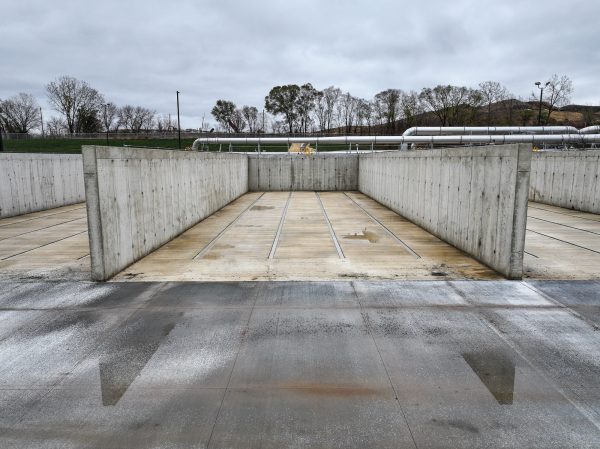
Next, the material is flipped to a second set of ASP bunkers for an additional 10 days, where it will meet high heat composting requirements for pathogen reduction. During active composting, microorganisms produce heat, which destroys any pathogens, weed seeds, or invasive species in the compost, ensuring our end product is safe for use.
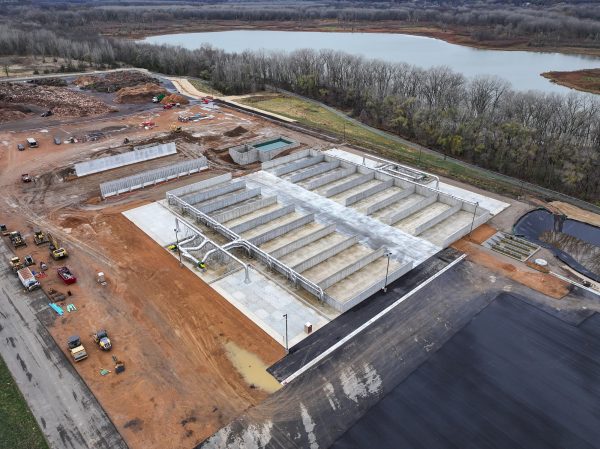
After both bunker stages are complete, the material has finished the active composting process and is moved to windrows to cure for approximately 45 days, which are turned periodically as needed.
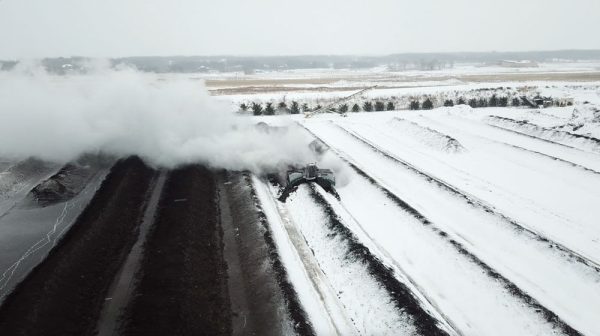
After curing has completed, we screen the compost with a specialized machine which accommodates for size reduction and contamination to create the most beautiful compost you’ve ever laid your eyes upon! We offer both quarter-inch and half-inch screened material.
